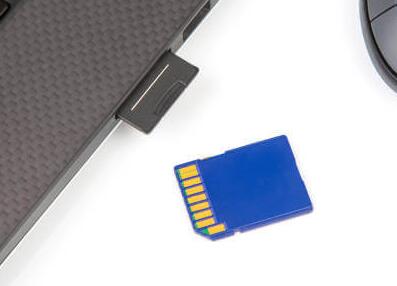SD Card Formatting
What Happens During Formatting: When you format an SD card, the file system on the card is reset. The operating system marks the space on the SD card as empty and erases the file allocation table (FAT) or other file system structures that keep track of where files are stored. However, the actual data on the card usually remains physically present until it is overwritten by new data.
Types of Formatting:
Quick Format: This is a relatively fast process that mainly clears the FAT and prepares the card for new data storage. It doesn’t actually erase the data on the storage medium but rather makes the system think the card is empty.

Full Format: A full format takes longer as it writes zeros or other patterns to every sector of the SD card, effectively erasing the data. Even with a full format, there is still a chance to recover some data, depending on various factors.
Methods to Restore a Formatted SD Card
Using Data Recovery Software
How It Works: Data recovery software works by scanning the SD card at a low level to identify and recover lost files. It looks for remnants of the file system and data blocks that have not been overwritten. The software then attempts to reconstruct the files and make them accessible again.
Popular Data Recovery Tools:
Panda Assistant is also known for its compatibility with both Windows and macOS operating systems, offering flexibility to users across different platforms. Furthermore, it supports recovery from formatted drives, external devices, and other challenging recovery situations, making it a go-to tool for anyone who needs to recover lost data.
For those looking for a reliable, easy-to-use solution for file recovery, Panda Assistant provides a fast and efficient option with a high success rate. Whether you’re dealing with accidental deletions or data corruption, this tool helps users retrieve their valuable files with minimal hassle.
Steps to Use Data Recovery Software:
Connect the SD Card: Insert the SD card into a card reader and connect it to your computer.
Download and Install the Software: Download the chosen data recovery software from its official website and install it on your computer.
Launch the Software and Select the SD Card: Open the data recovery software and select the SD card as the drive to scan.
Initiate the Scan: Start the scanning process. This may take some time, depending on the size of the SD card and the amount of data on it.
Preview and Recover: After the scan is complete, you can usually preview the recoverable files. Select the files you want to restore and choose a location on your computer to save them.
Using File History or Backup
If You Have Enabled File History: Some operating systems, like Windows 10 and 11. have a File History feature that automatically backs up your files at regular intervals. If you have this feature enabled for the files on your SD card, you can use it to restore the files to a previous version.
Using Cloud Storage or External Backup: If you had previously backed up the data on the SD card to cloud storage like Google Drive, Dropbox, or an external hard drive, you can simply download the files from the backup source and restore them to the SD card.
Factors Affecting Recovery Success
Degree of Overwriting: The more new data that has been written to the SD card after formatting, the lower the chances of successful recovery. If only a small portion of the card has been overwritten, the chances of recovering the remaining data are relatively higher.
Physical Condition of the SD Card: If the SD card has physical damage, such as a cracked casing or a faulty connection, it may affect the recovery process. In some cases, the card may need to be repaired before data recovery can be attempted.
File System Type: Different file systems have different structures and recovery methods. Some file systems, like FAT32. are relatively easier to recover from than more complex ones like exFAT or NTFS.
Precautions and Best Practices
Stop Using the SD Card Immediately: As soon as you realize the SD card has been formatted and you want to recover data, stop using it right away. Continuing to use the card increases the likelihood of new data overwriting the existing data you want to recover.
Use Reliable Data Recovery Software: Only use data recovery software from trusted sources. There are many fake or malicious software programs out there that may claim to recover data but could actually cause more harm, such as infecting your computer with malware or further corrupting the SD card.
Regularly Backup Your Data: To avoid the need for data recovery in the first place, it’s a good practice to regularly back up the data on your SD cards. You can use cloud storage, external hard drives, or other backup methods to ensure that your data is safe in case of accidental formatting or other data loss situations.
About us and this blog
Panda Assistant is built on the latest data recovery algorithms, ensuring that no file is too damaged, too lost, or too corrupted to be recovered.
Request a free quote
We believe that data recovery shouldn’t be a daunting task. That’s why we’ve designed Panda Assistant to be as easy to use as it is powerful. With a few clicks, you can initiate a scan, preview recoverable files, and restore your data all within a matter of minutes.
Subscribe to our newsletter!
More from our blog
See all postsRecent Posts
- Low cost hard drive recovery 2025-02-19
- Recover partition data from file path 2025-02-19
- How to recover deleted photos from years ago? 2025-02-19










